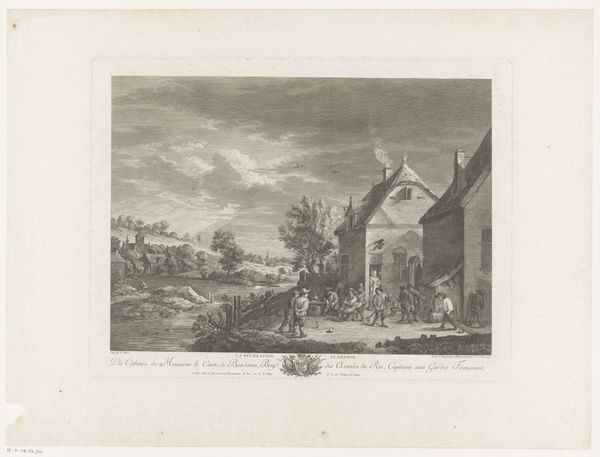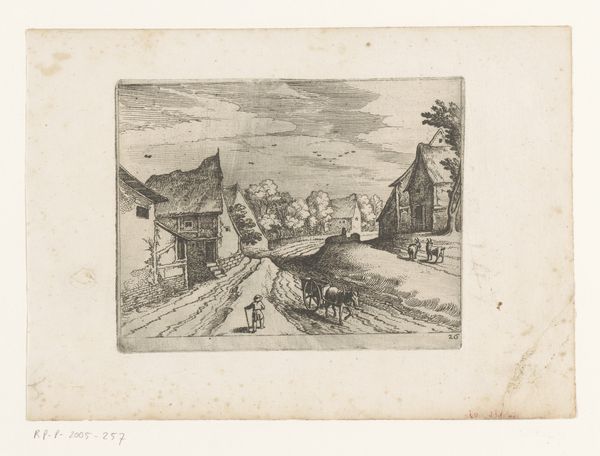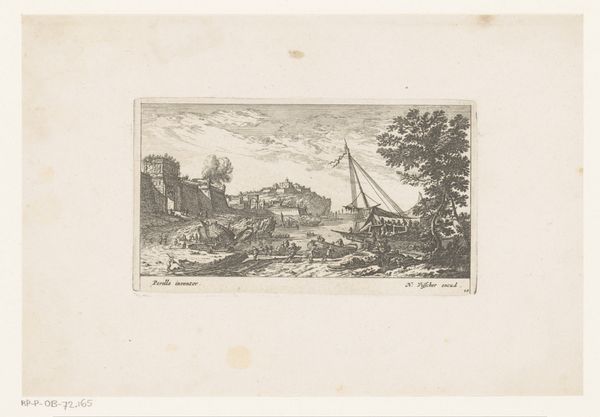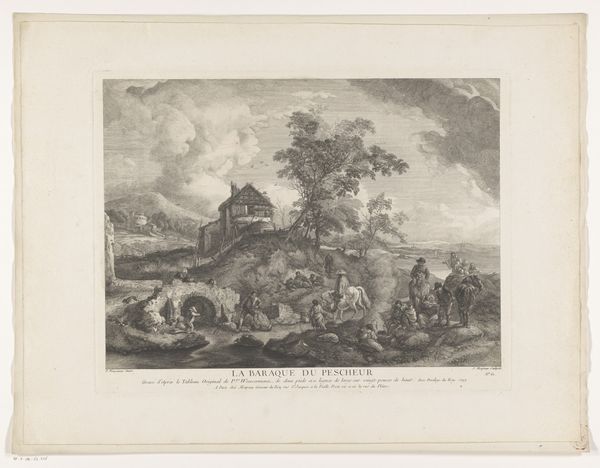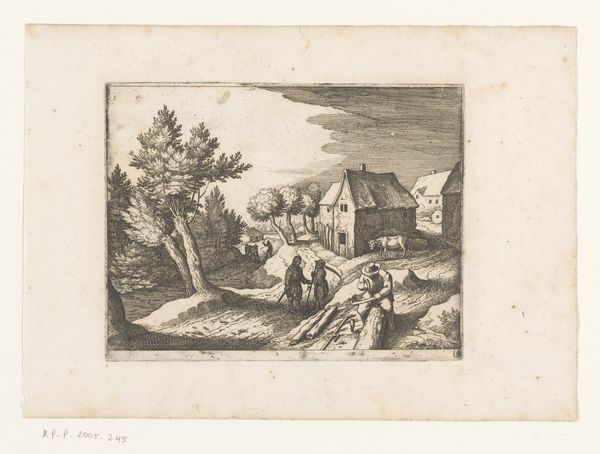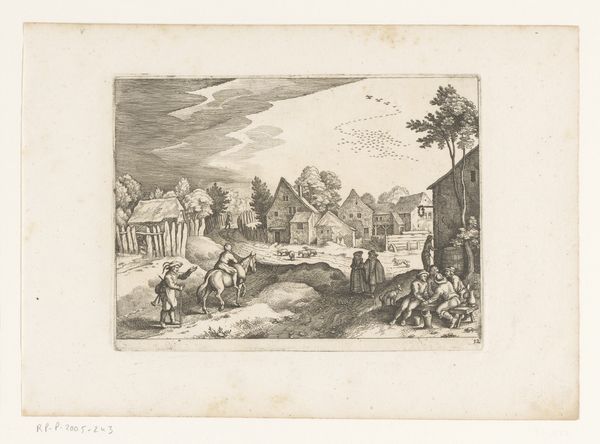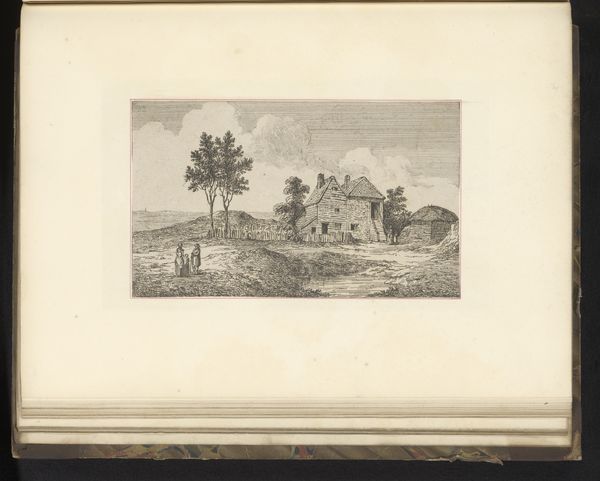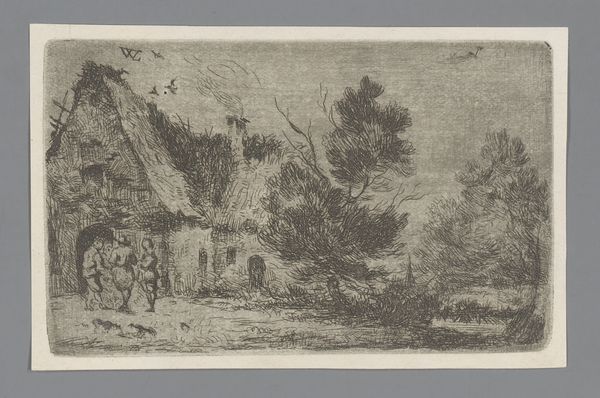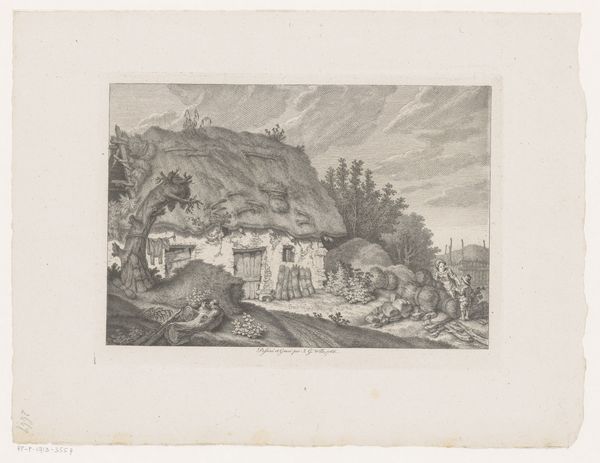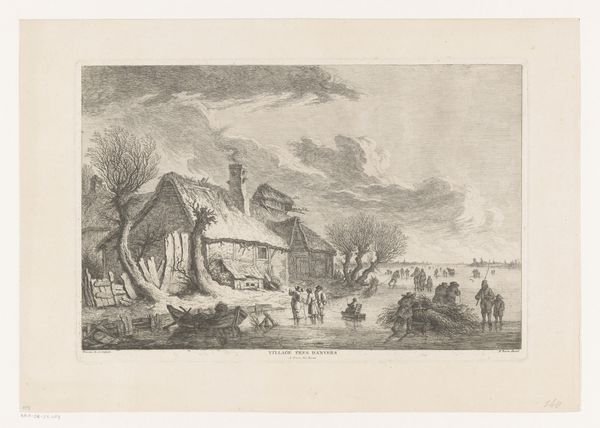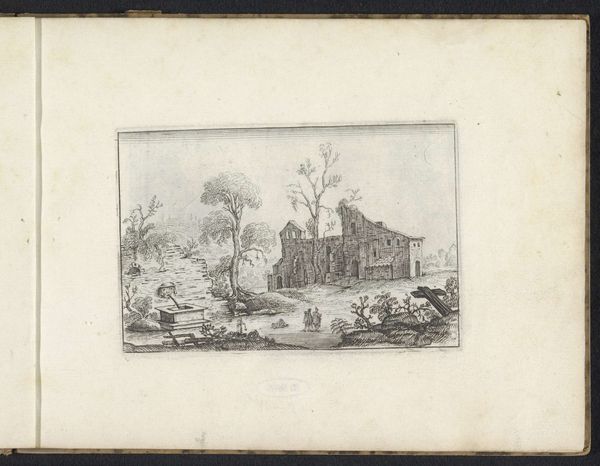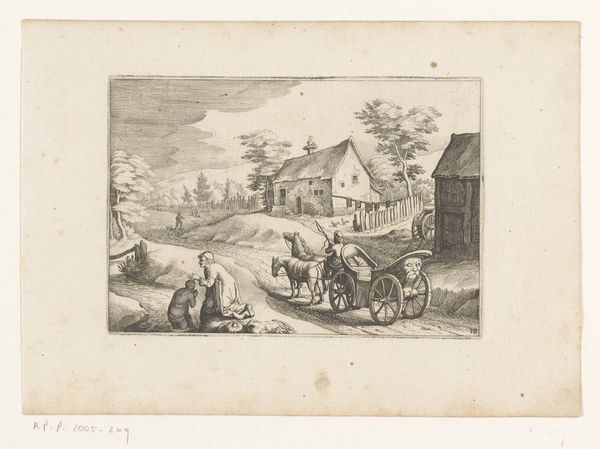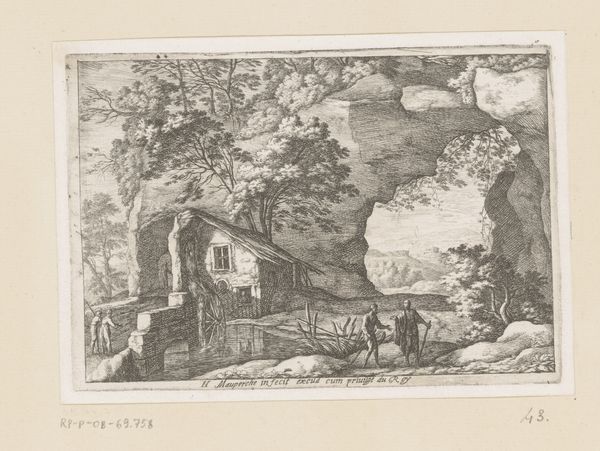
print, etching
# print
#
etching
#
landscape
#
house
#
romanticism
#
history-painting
Dimensions: height 249 mm, width 340 mm
Copyright: Rijks Museum: Open Domain
Editor: This is "Devastation by the Flood and Ice Floes at Beusichem, 1809" by Reinier Vinkeles, an etching. Looking at this, the chaos is immediate, a scene of wreckage and despair. What strikes you most about this print? Curator: It is compelling to consider the means of its production in the face of such a scene of material destruction. This etching served as both record and potential catalyst. How readily available would these prints have been, and to what social strata? This image wasn't just documenting loss; it was an artifact, a commodity potentially driving aid or simply reminding viewers of their own precarious existence. Editor: That's a really interesting angle, thinking about it as a commodity. I hadn't considered that. So, it's not just art, it's a means to... something? Curator: Precisely! We often divorce the object from its socioeconomic role, especially in romanticized views of the past. But how many impressions were made? What kind of paper? How was it distributed? These material factors directly affected its message. Think about the labour involved in the printmaking process itself - from the initial sketching to the final print run, there would be different layers of production contributing to the making of the image. Editor: I see. So the act of making and distributing the print also had an impact. The quality of the print run, the price point... who could even afford to buy something like this, and what does that say? Curator: Exactly. A flood devastates, but the *production* surrounding this image reveals further insights into the era’s values and its own social fabric. Editor: I never would have thought to analyze it like that, focusing on the physical object and its creation rather than the literal depiction. It definitely makes me rethink how I approach historical art. Curator: That approach allows us to examine labor and consumption while interrogating how such a representation fits into broader material exchanges.
Comments
No comments
Be the first to comment and join the conversation on the ultimate creative platform.
